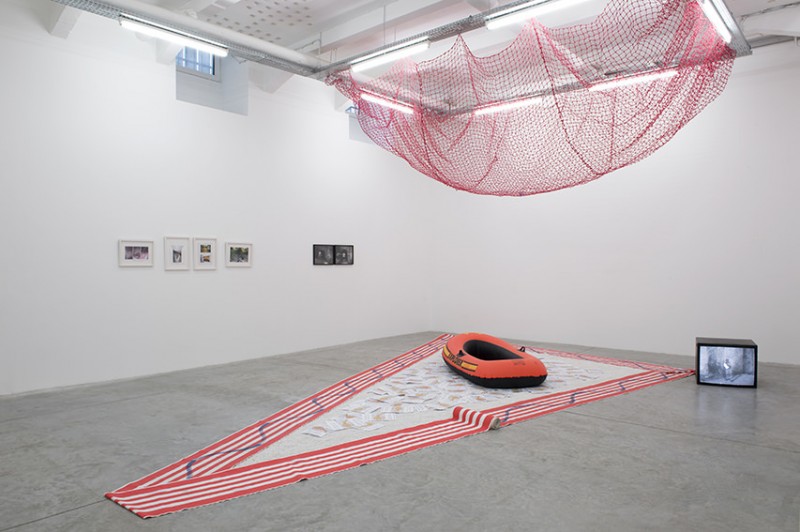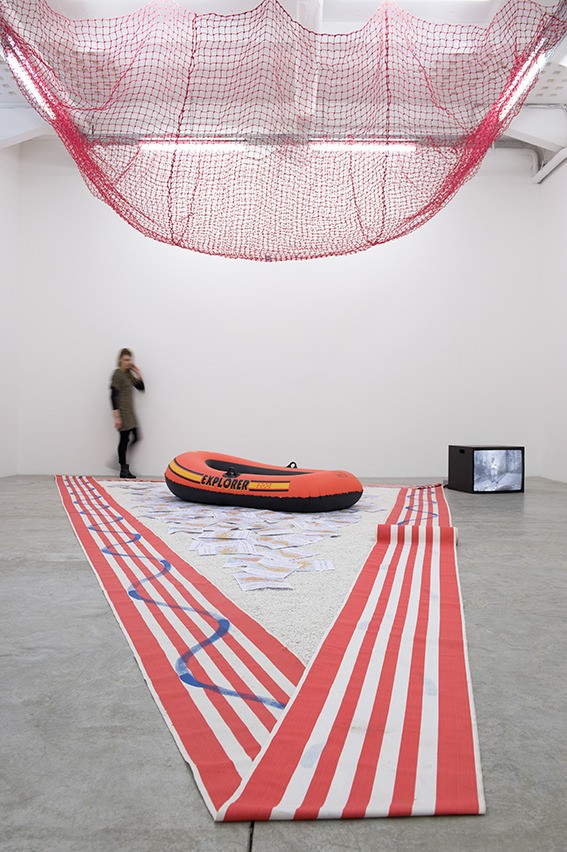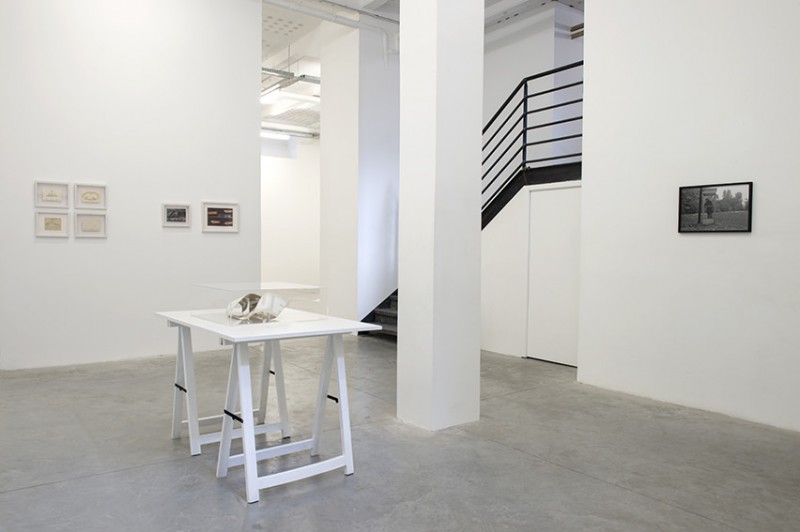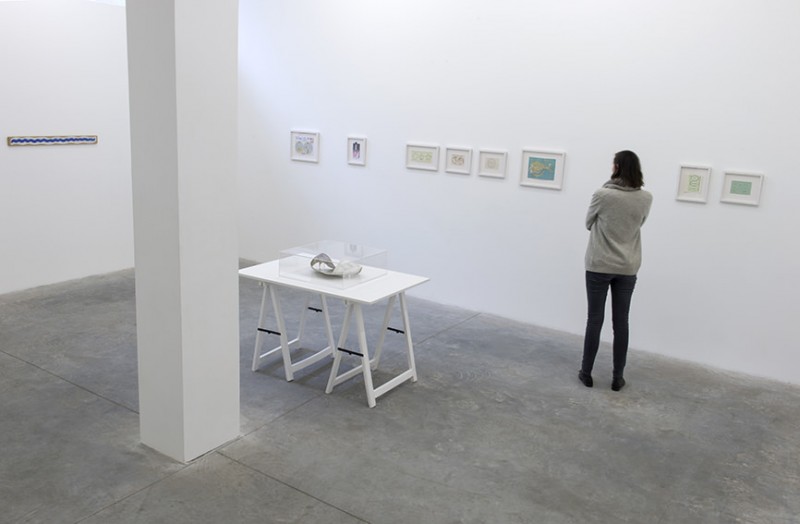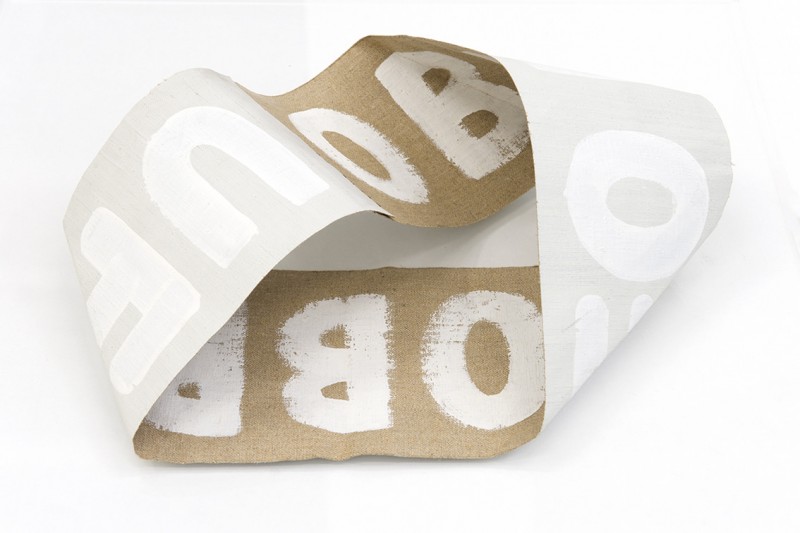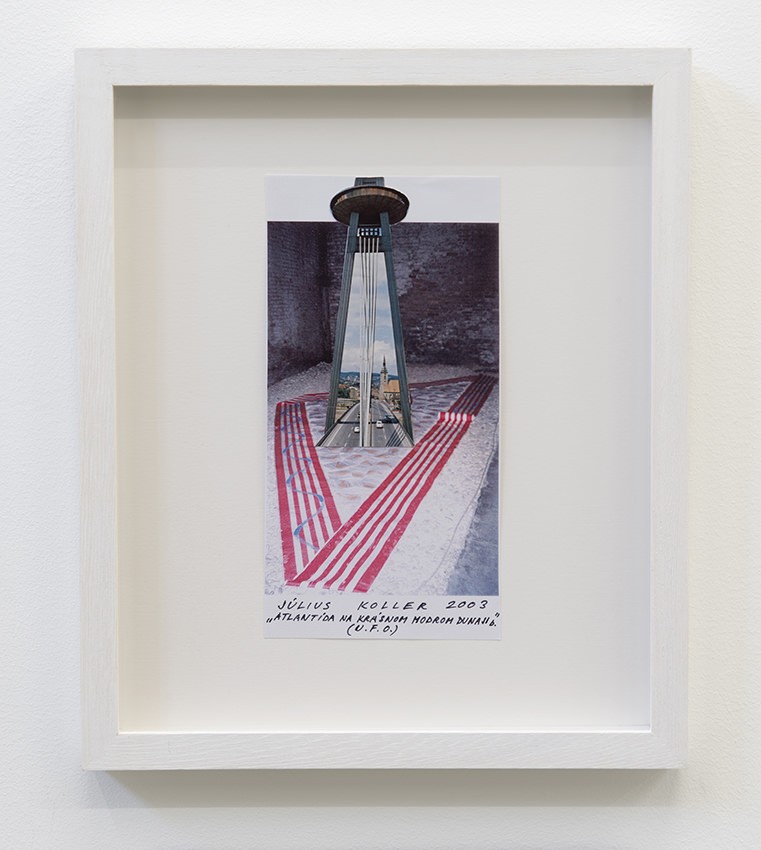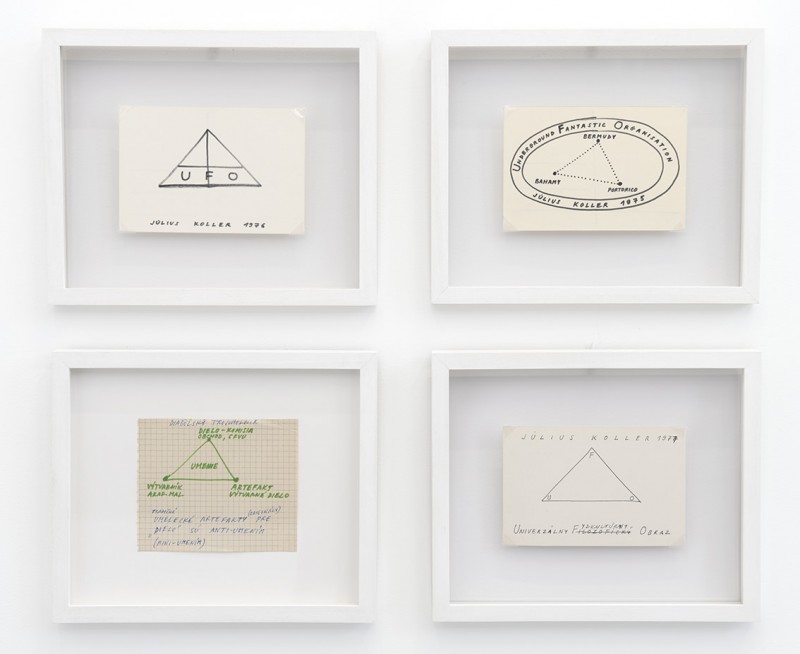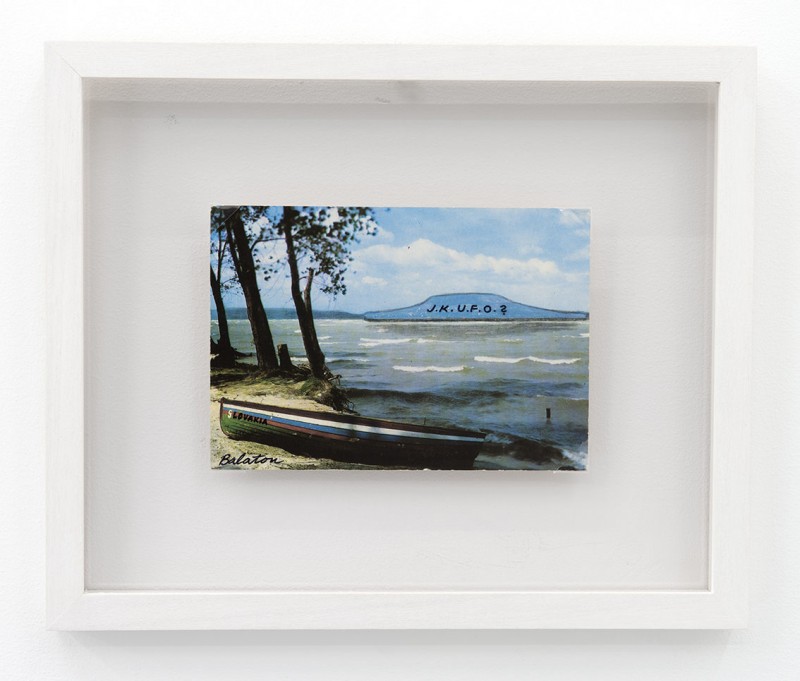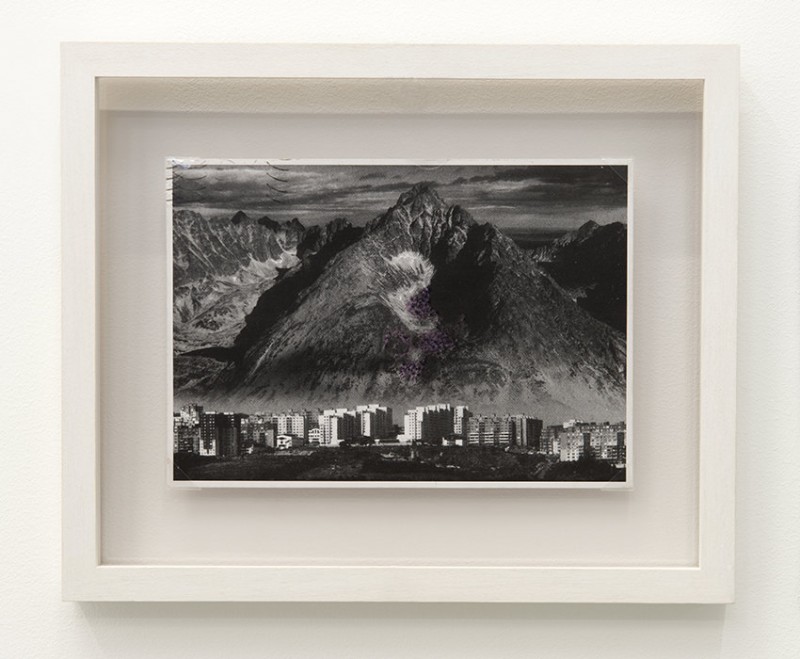Július Koller: A. for Atlantis
A solo exhibition by Július Koller
gb agency
From 31 January to 21 March 2015
Since the mid-1960s, the work of Július Koller has been an exploration of the potential for a better life within the realities of society as well as the development of human relationships through art. His often imperceptible projects, manifestos and actions have nonetheless left their mark on an altered reality. Dematerialized, the conceptual work is presented in an environment of permanent change in the public arena, redefining the existing borders between art and life.
Koller’s Anti-happenings transform everyday situations into a Subjective Cultural Situation. The artist develops a unique vocabulary based on symbols or mini-concepts using spaceships, question marks, sports, games, and even the riddles of history. Koller elaborates and reanimates ad infinitum these characters over the course of trips across the Slovak countryside, the urban areas of Bratislava, or on his own balcony in a city apartment complex. The improvised compositions developed into cards, telegrams, photos, and printed texts distributed by Koller.
In order to resist totalitarianism, Koller conceived an opening in which he could revisit the past and rewrite the future, the real and the possible. He assigned a cosmic dimension to his work: contradictions between utopia and reality create a different future. His attraction to the mystery of the universe is also evidence of the failure of the dream for an alternative socialist Czechoslovakia—the idea of the future, for something better, focused on other worlds. Koller constantly invented places in his head where he could create fictions (the Ganek Gallery in the High Tatra mountains), invent interlocutors (extra-terrestrials) and develop systems for interactions using games (Ping-Pong Club, tennis). Science fiction is thus the in-between to be filled, a forgotten place or story yet to exist. For Koller, speculation is a nearly invisible means of daily subversion. The universe is in flux, and confronting that instability Koller’s work is built on a permanent tradeoff between observation and action. He is constantly prodding the public arena with question marks; everything begins with the question: «A question mark is the symbol of doubt. I doubt everything (…) but not in a pessimistic way, rather in a realistic manner. Questions and the fact of asking questions are a tool against deception, against lies and ignorance (…) My activity rests on the recognition of the struggle of antitheses, on an admission of the world’s insolvability. Why should we receive some answer from nature, from God, from people? I don’t mind the unknown.»1
This attraction to mysteries of the universe will reverberate for Koller starting in 1974 with tales of the Lost City of Atlantis. In the third one-man exhibition of the artist, gb agency will present different views of the Bermuda Triangle - diabolic or heavenly. Koller gives new life to an obscure myth about a lost or fictional civilization by injecting new poetic speculations. Toying with different symbols (the infinity off the Möbius strip, the initials of a U.F.O., or the sign for a question mark), Koller produces a fiction that challenges our collective history. The 1992 manifesto illustrates his line of thinking: «The interrogative twisted line of the question mark was once satanic reptile expelling humankind from Eden as a result of our rational curiosity and questioning. Another time it was the mythical snake-like hair of the Medusa-Gorgon as well, or a Celtic-Viking knot pattern, either metaphorical sign for infinity, the Möbius multi-dimensional loop, Einstein’s time-and-space relativity, an oscillatory energy curve, magic Polk spirals, the line turn round on a tennis ball, water… After 1989, I used horizontal white, blue and red stripes (Transient Cultural Situation) and in 1990 I came with horizontally positioned question marks and oscillatory signs to magic signs of the wavy line which became my communication with old Slavic culture and civilization of Atlantis, and extra-terrestrials. Then I transformed horizontal and vertical wavy lines (also zigzag lines) in nets.» 2
As science and faith mingle, Július Koller creates interruptions and anachronisms, he dismantles, shapes, disassembles and reassembles parallel timeframes. A literary movement of the counter culture of the 1970s, ‘Fantastic Realism’ embraced this enthusiasm for the mysteries of the cosmos, and was avidly read by Koller. Atlantis becomes the terrain where history and imagination meet. A collection of drawings, collages, maps, photographs and documents form the exhibition and portray different associations imagined by the artist. At times Koller is central to the connection between spaceships and Atlantis, at times he uses a diabolic triangle to condemn the link between art and power in his country. At other times, Atlantis takes on a geopolitical dimension with references to global imperialism. And yet this Atlantis often produces more existential musings on the origin of the world and conscience, our humanity. «In 1974 I enriched my series of signs with a triangle, the context of disappearance, kidnapping, mystery, operations of unknown forces Diabolic Triangle (U.F.O.). Later I filled the triangle segments with ideas of U.F.O., Atlantis, art, plane, space, sci-fi and myself. In my texts and text-cards (with drawings) analyzing mythology and history, I varied the abbreviation U.F.O. in a number of thematic concepts. In 1978 I discovered Möbius strip and I started to apply its physical properties to the actions in my visual programs.» 3
We will also show an installation produced as part of the ‘Utopia Station’ project for the 50th Venice Biennale. 4 Atlantis (U.F.O.), 2003, is a strip of fabric with red and white stripes on which runs a blue wavy line, placed in the shape of a triangle on the ground, and in the center of which the artist put an inflatable boat. Above that is suspended a net (another recurring element) into which during a performance in 2003 the artist threw crumpled paper balls referring to the myth of the Golden Fish. The Golden Fish of Atlantis (U.F.O.) shows a map of Venice in the shape of a golden fish where the Grand Canal becomes the drawing of a question mark.
This unknown inaccessible place gives the impression of offering an entry point via mental maneuvers. A utopia, a liberation from reality, or a land of horror? If the notion of a utopia is important to Koller it is again as a question since he does not believe in an ideal collective utopia. In Július Koller’s repertoire, Atlantis is a fluidity of concepts and timeframes, an interpretation of thought in motion. It is a place open to doubt and open to communication with others.
With thanks to Květoslava Fulierová, Kathrin Rhomberg, Georg Schöllhammer, Daniel Grúň and The Július Koller Society.
Translation Miles Hankin.
-
Catalog for the “Ausgeträumt…” Exhibition, within text by Kathrin Rhomberg, Wiener Secession, 2001. ↩
-
Július Koller Manifesto: “From an Anti Happening Actions, across Trans Avanguard Question Marks and Wavy Lines to the dispersion and Movement in Neo-Avanguard Net”, 1996. ↩
-
Július Koller, from a lecture presented at MCA Museum of Contemporary Art, Sydney, 1994. ↩
-
La Biennale di Venezia, 50th International Art Exhibition, 15th June - 2nd November 2003, Utopia Station, Arsenale di Venezia, Curators: Molly Nesbit, Hans-Ulrich Obrist, Rirkrit Tiravanija. ↩
